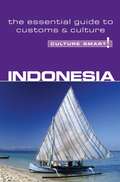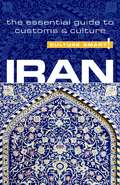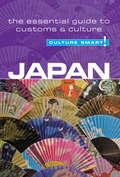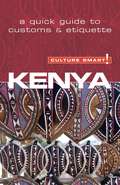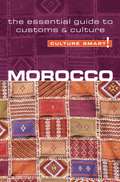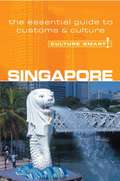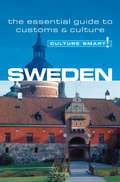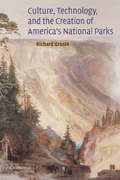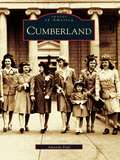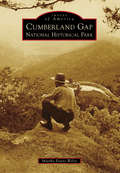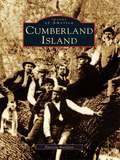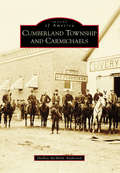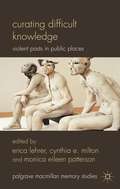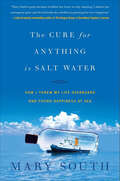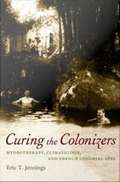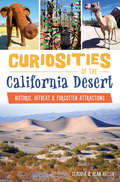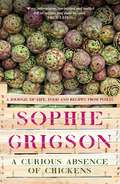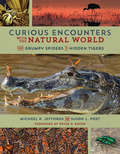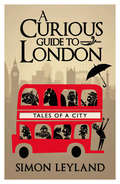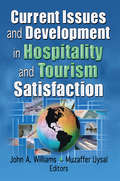- Table View
- List View
Culture Smart! Indonesia
by Graham SaundersCulture Smart! provides essential information on attitudes, beliefs and behavior in different countries, ensuring that you arrive at your destination aware of basic manners, common courtesies, and sensitive issues. These concise guides tell you what to expect, how to behave, and how to establish a rapport with your hosts. This inside knowledge will enable you to steer clear of embarrassing gaffes and mistakes, feel confident in unfamiliar situations, and develop trust, friendships, and successful business relationships. Culture Smart! offers illuminating insights into the culture and society of a particular country. It will help you to turn your visit, whether on business or for pleasure, into a memorable and enriching experience.
Culture Smart! Iran
by Stuart WilliamsThis book aims to show how life in Iran really is and how visitors can feel comfortable in its society. It explains the basic culture of a country full of surprises. Despite Iran's deep commitment to Islam, the pre-Islamic Zoroastrian past is still part of everyday life. Its language, Farsi, shares the same linguistic roots as English or French. It is a country where one of the more genuine democracies in the Middle East is overlaid by an unelected theocracy. And where "no thank you" really does sometimes mean "yes please."
Culture Smart! Japan
by Paul NorburyJapan is at a crossroads. The postwar economic miracle that brought it unprecedented development and prosperity is over. Since the publication of the first Culture Smart! guide, it has been overtaken by China as the world's second-largest economy. The balance of power in Asia has shifted and new players are entering the field. Loss of influence abroad, economic pressure at home, and the problems posed by a rapidly aging population present a real challenge to Japan's orderly and harmonious way of life, and to the very sense the Japanese have of themselves as a nation "apart." Traditional Japanese culture--based on a consensus-driven philosophy and underpinned by many protocols--is threatened by job insecurity, a growing class divide, and disillusionment with political leaders. But all is not lost. Japan is still a major economic power and cultural trendsetter, and the Japanese have a genius for innovation. The younger generation is open to change, women have a new confidence, and the country's technical and scientific research capability is as good as it gets. There is a growing ecological awareness that may well translate into new forms of eco-friendly industries. No one can predict how Japan will rise to the challenge, or what effect the changes will have on how people live, think, and behave. Paul Norbury's revised and updated edition of Culture Smart! Japan will guide you through a shifting cultural maze, and help you make your visit to this important, dynamic, and creative society a rich and mutually rewarding experience.
Culture Smart! Kenya
by Jane BarsbyCulture Smart Kenya! is not intended as a travel guide. It won't tell you how to climb Mount Kenya or where to spot lions; but it will tell you how to make the most of your visit by interacting fully with the people. It describes many different aspects of Kenyan life, both private and public, from traditional African customs to modern business practices. By offering insights into people's behavior, values, and attitudes, it will prepare you for cultural differences and help you to respond with respect and understanding.
Culture Smart! Malaysia
by Victor T. KingIn many respects Malaysia is a modern nation-state, and from a predominantly rural society in the immediate postwar years it has become an increasingly urbanized one. Nevertheless, elements of the traditional past remain. To help foreign visitors and residents navigate this rich and complex cultural mix, Culture Smart! Malaysia provides a succinct and straightforward introduction to Malaysian history and society. It explains the deeper core values of the different ethnic groups, and guides you through Malaysian etiquette and behavior so that you might be inclined to do the right rather than the wrong things. "Human intelligence" is key to successful relationships. But nothing is guaranteed in a globalized world. We all take our chances and hope that we are sufficiently sensitive to be able to survive those awkward cross-cultural moments.
Culture Smart! Morocco
by Jillian YorkThe Moroccans are warm, hospitable, and open-minded, but for the uninitiated, there can be plenty of snares and snags along the road to acceptance. Culture Smart! Morocco aims to start you on the path to understanding this sometimes frustrating, yet rich and fascinating culture. The brief historical overview provides an insight into the way the past has helped shape modern Moroccan values and attitudes. There are chapters on customs and traditions, and on the complexities of modern Moroccan life, with advice on what to expect and how to behave appropriately in different situations. For the business traveler there is practical guidance on how to get things done, and how to make the most of the opportunities that present themselves.
Culture Smart! Portugal
by Sandy Gueded De QueirozTravel book on Portugal. All the essential culture and etiquette points are covered, making you confident in a variety of situations. You'll learn how to behave in specific social and business situations. Essential attitudes and values are clearly explained. You'll find the concise writing style makes each topic a quick, easy read.
Culture Smart! Singapore
by Angela MilliganThe small island state of Singapore is unique in the region. Not only is it a very young country- independence came in 1965- but it is a land of immigrants, in which people from three distinct backgrounds, Chinese, Malay, and Indian, live side by side in harmony. Culture Smart! Singapore introduces the Western visitor to the rich and varied cultures and customs of Singapore's communities. It shows what motivates people, how they interact with each other and with outsiders, and tells you what to expect and how to behave in unfamiliar situations. In doing so, it offers you a fuller, more rounded experience of this fascinating society.
Culture Smart! Sweden
by Charlotte J. De WittIf you are visiting Sweden for more than a few days, you will get much more out of your trip if you have a good background in the beliefs that make up the foundation of the Swedish way of life. Culture Smart! Sweden can help you get beyond the polite phase, so that you have a greater understanding of what is important to the Swedes and why they act the way they do. It considers the influence of Sweden's geography and history in shaping the national character. In addition to detailed information on deep-rooted Swedish values and attitudes, it gives a comprehensive overview of doing business in Sweden--essential information for anyone who needs to understand the unique way that Swedish businesses operate. As for socializing, you will get an insider's perspective on visiting a Swedish home, as well as the qualities that Swedes most appreciate in a guest. With detailed chapters on the customs and traditions that form the cornerstones of life in Sweden, and information on how and where to meet and communicate with Swedes, this book is an indispensable guide to the "real" Sweden.
Culture Smart! USA
by Gina TeagueCulture Smart! USA aims to provide you with a cultural "road map" to explain the human dimension of American society. The author takes you on a tour of the core influences and unique ideals that have shaped American society. These deeply held values drive the behavior and attitudes you will encounter on Main Street and in the workplace. We take the pulse of America today. Ever a work in progress, America bears the challenge of upholding its constitutional principles at home, and the responsibility of being the world's only superpower overseas. On a lighter note, we look at the Americans at work, at home, and at play.
Culture, Technology, and the Creation of America's National Parks
by Richard GrusinRichard Grusin's innovative study investigates how the establishment of national parks participated in the production of American national identity after the Civil War. The creation of America's national parks is usually seen as an uncomplicated act of environmental preservation. Grusin argues, instead, that parks must be understood as complex cultural technologies for the reproduction of nature as landscape art. He explores the origins of America's three major parks--Yosemite, Yellowstone, and Grand Canyon--in relation to other forms of landscape representation including photography, mapping, travel writing, and fiction.
Cumberland
by Amanda PaulSettled on the banks of the Potomac River, Cumberland has watched time and progress stream through since its days as a fort in the colonial wilderness. Ascending the throne as the "Queen of the Alleghenies," the town became an essential transportation and industrial hub throughout the 19th and 20th centuries. Serving as the starting point for the National Road, the western terminus of the C&O Canal, and an important link along the B&O and Western Maryland Railroads, Cumberland attracted dozens of industries that churned out glass, textiles, tires, and even local brews. Prosperity and growth began to reshape the town, and soon distinct neighborhoods found their own identities while maintaining their strong links to Cumberland as a whole. Despite a post-war decline in its industrial sector, Cumberland continues to be a vibrant town of hardworking people who remain proud of their rich heritage and traditions. Selected from a variety of local sources, photographs in Images of America: Cumberland offer unique and memorable views of the people and places that have defined Cumberland over the past 150 years.
Cumberland
by Patrick H. StakemCumberland is known as the "Queen City of the Alleganys." The National Road, the Baltimore and Ohio Railroad, and the Chesapeake and Ohio Canal pass through the town, which was once an Ohio Company outpost and the westernmost part of the British Empire in North America. Cumberland has changed from a trading site to a manufacturing locality, to a tourist haven over many generations.
Cumberland Gap National Historical Park (Images of America)
by Martha Evans WileyBest known for its pivotal role in opening up the western frontier and its association with explorers and pioneers, the legendary Cumberland Gap has long been celebrated in music and literature. To better preserve that history, Cumberland Gap National Historical Park was authorized in 1940 and now covers more than 24,000 acres in Kentucky, Virginia, and Tennessee. Daniel Boone is remembered here, as well the Native Americans who used the path through the mountains for trade and warfare, the Civil War soldiers who took turns guarding this strategic portal, the geologists and industrialists who saw the potential for development, the businessmen who built one of the nation's first roads for automobile travel, and the displaced residents who gave up their homes for the park. The dream of a few dedicated individuals to one day restore the historic Wilderness Road through the Cumberland Gap came true in 2002 after decades of planning, and visitors can once again walk in the footsteps of the pioneers. Photographs spanning more than a century bring to life the fascinating stories and history of this pass.
Cumberland Island
by Patricia BarefootRich in history, wildlife, and beautiful coastal landscapes, Georgia's Cumberland Island attracts many an island tourist and nature lover. The island's well-preserved marshes, tidal creeks, and dune fields provide this hidden oasis with a rare natural charm. The area is also home to a wide variety of animal species, including loggerhead turtles, bob cats, manatees, and alligators, just to name a few. Though Cumberland is best known for being the nation's largest wilderness island, its history-dating back to the 16th century-also includes a period of use as a mission by the Franciscans. Among its historic sites are the magnificent ruins of Dungeness, the house built by the Carnegie family during the latter part of the 19th century, as well as the romantic Greyfield Inn. This pictorial history of Cumberland Island illustrates the people, places, and events that have shaped the area's cultural and natural history. The island's rare solitude and beauty, which have resulted from conservation and preservation efforts in the area, are captured in this carefully detailed book for all lovers of nature and history to enjoy. Though the island permits only very limited human traffic, these images allow the reader to appreciate the Cumberland landscape-laced with wild animals, pirate coves, English forts, and an African-American "settlement"-from afar.
Cumberland Township and Carmichaels (Images of America)
by Shelley Mcminn AndersonCumberland Township, located in the northeastern portion of Greene County, was one of Pennsylvania’s original townships. The history of this area shows that settlers were here prior to 1760. The settlement known as Old Town was founded in 1767. In 1796, Carmichaels was named in honor of Maj. James Carmichael, a Revolutionary War soldier and pioneer settler. Carmichael had traded his land in what is now the town of Jefferson for land owned by Thomas Hughes along the banks of Muddy Creek in Old Town. Carmichaels became home to the Greene Academy, notably, the first school of higher learning west of the Allegheny Mountains. The Carmichaels Covered Bridge spans Muddy Creek separating Old Town from Carmichaels. Both the Greene Academy and the Carmichaels Covered Bridge are listed on the National Register of Historic Places.
Curating Difficult Knowledge
by Erica Lehrer Cynthia E. Milton Monica Eileen PattersonThis volume inscribes an innovative domain of inquiry, bringing museum and heritage studies to bear on questions of transitional justice, memory and post-conflict reconciliation. As practitioners, artists, curators, activists and academics, the contributorsexplore the challenges of bearing witness to past conflicts. "
The Cure for Anything Is Salt Water: How I Threw My Life Overboard and Found Happiness at Sea
by Mary SouthAt forty, Mary South had a beautiful home, good friends, and a successful career in book publishing. But she couldn't help feeling that she was missing something intangible but essential. So she decided to go looking for it . . . at sea. Six months later she had quit her job, sold the house, and was living aboard a forty-foot, thirty-ton steel trawler she rechristened Bossanova. Despite her total lack of experience, South set out on her maiden voyage—a fifteen-hundred-mile odyssey from Florida to Maine—with her one-man, two-dog crew. But what began as the fulfillment of an idle wish became a crash course in navigating the complicated byways of the self.
Curing the Colonizers: Hydrotherapy, Climatology, Andfrench Colonial Spas
by Eric T. Jennings"Beware! Against the poison that is Africa, there is but one antidote: Vichy. " So ran a 1924 advertisement for one of France's main spas. Throughout the French empire, spas featuring water cures, often combined with "climatic" cures, thrived during the nineteenth century and the twentieth. Water cures and high-altitude resorts were widely believed to serve vital therapeutic and even prophylactic functions against tropical disease and the tropics themselves. The Ministry of the Colonies published bulletins accrediting a host of spas thought to be effective against tropical ailments ranging from malaria to yellow fever; specialized guidebooks dispensed advice on the best spas for "colonial ills. " Administrators were granted regular furloughs to "take the waters" back home in France. In the colonies, spas assuaged homesickness by creating oases of France abroad. Colonizers frequented spas to maintain their strength, preserve their French identity, and cultivate their difference from the colonized. Combining the histories of empire, leisure, tourism, culture, and medicine, Eric T. Jennings sheds new light on the workings of empire by examining the rationale and practice of French colonial hydrotherapy between 1830 and 1962. He traces colonial acclimatization theory and the development of a "science" of hydrotherapy appropriate to colonial spaces, and he chronicles and compares the histories of spas in several French colonies--Guadeloupe, Madagascar, Tunisia, and Runion--and in France itself. Throughout Curing the Colonizers, Jennings illuminates the relationship between indigenous and French colonial therapeutic knowledge as well as the ultimate failure of the spas to make colonialism physically or morally safe for the French.
Curiosities of the California Desert: Historic, Offbeat & Forgotten Attractions
by Claudia HellerOne might not expect to find much in the middle of California's hot, dry deserts. But to the curious explorer, they're scattered with strange and extraordinary sights. On old Route 66, the desert traveler can find quirky roadside art and mementos left by motorists. In the El Paso Mountains of the Mojave, the daring adventurer can crawl through a tunnel that was hand dug by an old prospector named Burro Schmidt. In Landers, the weary wanderer can enjoy a rejuvenating "sound bath" in an acoustically perfect dome supposedly designed by aliens. From astounding natural wonders to remnants of ancient civilizations and the Wild West, discover treasures of history, puzzling mystery and uncommon eccentricity alongside seasoned road trippers Alan and Claudia Heller.
A Curious Absence of Chickens: A journal of life, food and recipes from Puglia
by Sophie Grigson'My first thought on reading A Curious Absence of Chickens is that Jane Grigson, the best cookery writer in my lifetime, would have been so proud of her daughter. Sophie Grigson has written twenty odd excellent cookbooks, but I think this is the best of them. It is her first book for a decade and was obviously driven by a real love of her subjects, which are Puglia, people and food. It is witty, informative, fascinating and stuffed full of recipes you want to cook.' Prue Leith'Puglia is a region I wanted to get to know intimately, to understand culture, life, history and geography, reflecting through the prism of the food that's put on the tables of locals and tourists, too. I'm reminded of my 20-year old self, scribbling in notebooks as I first travelled through Italy's south, only this time I'm back to stay.'After her children grew up and left home, Sophie Grigson found herself living alone. About to turn 60, she took the decision to sell or give away most of her belongings, to pack up her car and to drive to Puglia on her own to start a new life. In a part of Italy where she didn't know anyone, having last visited the region 40 years ago, this narrative book of food writing, stories and recipes brings to life the region, its food and the local characters that she meets along the way. This is a book about courage, hope, new horizons and, above all, delicious food.
A Curious Absence of Chickens: A journal of life, food and recipes from Puglia
by Sophie Grigson'Sophie Grigson has written twenty odd excellent cookbooks, but I think this is the best of them. It is her first book for a decade and was obviously driven by a real love of her subjects, which are Puglia, people and food. It is witty, informative, fascinating and stuffed full of recipes you want to cook.' Prue Leith'Puglia is a region I wanted to get to know intimately, to understand culture, life, history and geography, reflecting through the prism of the food that's put on the tables of locals and tourists, too. I'm reminded of my 20-year old self, scribbling in notebooks as I first travelled through Italy's south, only this time I'm back to stay.'After her children grew up and left home, Sophie Grigson found herself living alone. About to turn 60, she took the decision to sell or give away most of her belongings, to pack up her car and to drive to Puglia on her own to start a new life. In a part of Italy where she didn't know anyone, having last visited the region 40 years ago, this narrative book of food writing, stories and recipes brings to life the region, its food and the local characters that she meets along the way. This is a book about courage, hope, new horizons and, above all, delicious food.'Vivid, humorous and unsentimental, Sophie's portrait of modern Puglia, still seeped in old ways, is a delicious treat' Xanthe Clay'OMFG! This beautiful book is transporting me there. I can't put it down. And the lack of chickens...I never bloody noticed!' Matt Tebbutt
Curious Encounters with the Natural World: From Grumpy Spiders to Hidden Tigers
by Michael Jeffords Susan PostMichael R. Jeffords and Susan L. Post have circled the globe--and explored their neighborhood--collecting images of the natural world. This book opens their personal cabinet of curiosities to tell the stories of the pair's most unusual encounters. From the "necking" battles of mate-hungry giraffes to the breathtaking beauty of millions of monarch butterflies at rest, Jeffords and Post share 200 stunning photographs and their own insightful essays to guide readers on a spectacular journey. Their training as entomologists offers unique perspectives on surprise stag beetle swarms and spider hunting habits. Their photographic eye, honed by decades of observation, finds expression in once-in-a-lifetime images. The result is an eyewitness collection of startling and unusual phenomena that illuminates the diverse life inhabiting our planet.
A Curious Guide to London
by Simon LeylandFrom petticoat duels and lucky cats to the Stiffs Express, Lord Nelson's spare nose, the Piccadilly earthquake and the Great Beer Flood of 1814, A Curious Guide to London takes you on a captivating, wildly entertaining tour of the city you think you know, unearthing the capital's secrets and commemorating its rich, colourful and unusual history. Brimming with tales of London's forgotten past, its strangest traditions and its most eccentric inhabitants, this book celebrates the unique, the unusual and the unknown. Perfect for tourists, day-trippers, commuters and the millions of people who call London home, this alternative guidebook will make you look at the city in a whole new light.
Current Issues and Development in Hospitality and Tourism Satisfaction
by Muzaffer Uysal John A WilliamsStay ahead of your customers as their service expectations change! In Current Issues and Development in Hospitality and Tourism Satisfaction, experts from the field explore customer satisfaction strategies, examining both the long-term and short-term results. This vital tool shows you new and effective approaches for understanding customer satisfaction and providing quality service at all levels of the hospitality and tourism industry. Hospitality and tourism faculty and students as well as professionals will find this book useful for improving and providing quality service management. This book illustrates the complex relationship between customer and service provider, offering practical advice and techniques for maximizing consumer contentment. Current Issues and Development in Hospitality and Tourism Satisfaction contains models for meeting-and even surpassing-consumer expectations to increase the value of the customer&’s experience. This essential resource includes various methods for managers to anticipate consumer needs and perceptions, reducing dissatisfaction. This book helps you: incorporate existing and alternative measurements of satisfaction measure and improve service quality create and maintain social interaction linkages between staff and customer identify the destination performance of your hotel and other destinations or attractions evaluate consumer satisfaction with lodging services increase cross-cultural service satisfaction and much more! Tables and figures throughout the text help demonstrate the strategies, and bibliographies at the end of each chapter offer further reading. While there are other books that focus on customer satisfaction, Current Issues and Development in Hospitality and Tourism Satisfaction is rare in that it covers satisfaction issues as they apply to both hospitality and tourism.
